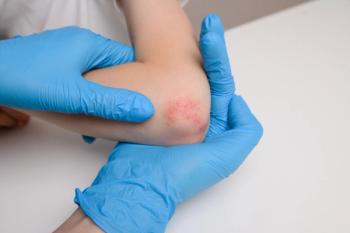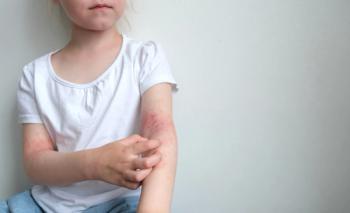
Improvements in Vitiligo Repigmentation More Noticeable in Patient-Reported Outcome Measures
Improvement of vitiligo repigmentation in patients can result in higher Vitiligo Noticeability Scale values when assessed from patient-reported outcome measures versus traditional investigator-assessed studies.
Improvement of vitiligo repigmentation in patients can result in higher Vitiligo Noticeability Scale values when assessed from patient-reported outcome measures (PROMs) versus traditional investigator-assessed studies.
In a report published in the British Journal of Dermatology, researchers investigated further into the Vitiligo Noticeability Scale (VNS) by comparing results from the patient-reported and invesitgator-assesed studies. The VNS scale assesses cosmetic acceptability of repigmentation of individual lesions of vitiligo.
Data was collected from patients with vitiligo participating in a phototherapy trial to assess the noticeability of a single patch of vitiligo after 9 months of treatment, then compared it with a baseline photo and score improvement using the noticeability scale. Researchers compared the score with the patient-reported global treatment success score for validation.
To further confirm the results, three other individuals with vitiligo rated the before and after images of the patients using the same scales. Three clinicians also rated the images for global treatment success and percentage repigmentation. The VNS showed good construct validity and the results were the same in all ages and skin types.
According to the report, these improved repigmentation outcomes are important to vitiligo patients as any improvement indicates the condition is no longer worsening.
Data included that 14.6% of subjects in the present study valued a VNS score of only 2, corresponding to no change innoticeability. According to researchers, the improvement in noticeability in this study depends on the eye of the beholder, as the raters with vitiligo and clinicians did not share this enthusiasm with the subject.
Researchers also suggested that results of the study will be beneficial to other researchers planning trials for new treatments. As with previous studies, a level of 75% or greater repigmentation of a target lesion was confirmed to be significant in this study.
As the VNS is used more frequently, it will be easier to compare treatments and we will learn even more about this PROM as it is used in wider, more diverse groups in the future, the report said.
Lastly, it was suggested research should be performed to develop PROMs that are static and measure improvement in all vitiligo lesions in a single patient.
Newsletter
Pharmacy practice is always changing. Stay ahead of the curve with the Drug Topics newsletter and get the latest drug information, industry trends, and patient care tips.















































































































